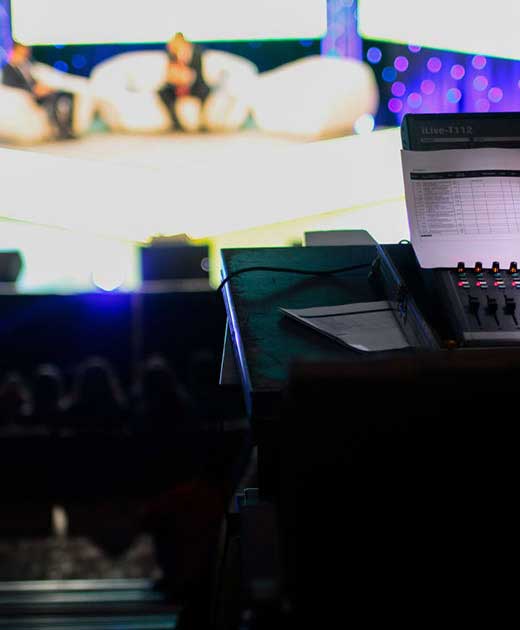
There are many factors to take into consideration when deciding to host a live or pre-recorded event but the planning should start with what your overall goals and aims are for you and your attendees.
For live sessions, be considerate of the time zone of the attendees and speakers. Avoid anyone presenting or attending at odd hours of the day and be mindful in a global working environment.
Budget and costs versus return on investment and objective is also a key factor. Studio hire costs, virtual environment design, and video recording and editing are not necessarily a small investment and you must understand the value it brings to your audience to have a very polished recording to listen to, versus an engaging live presentation by a speaker.
It’s also important to anticipate whether your content will generate many questions and if you can expect interaction from your audience, or if it’s merely an ‘information download’. This will determine if a live presentation would work better to carry across the message effectively and gain the right audience engagement levels, or would a pre-recorded video allow attendees to absorb the information in their own time.
Two to tango: Boosting engagement on screen
Increasing and measuring engagement are equally important in both live and pre-recorded events. Creating a dialogue with the audience and fostering participation increases attendee engagement. Surveys, polls and chat are some of the tools to help measure engagement. You can be limited by the meeting platform but tools and data analytics are able to provide detailed information, including time spent in sessions, highest area of traffic, drop-off rates, chat logs and survey and feedback ratings.
For live sessions, consider live audience interaction with questions and answers. Engaging and reacting to feedback in real time adds to the overall attendee experience. Take this a step further with gamification - earning points or trophies and redeeming prizes by completing tasks is a great way to incentivise attendee engagement.
Format and function: How to think about content
So what are the best practices for live and pre-recorded and how should planners be thinking about content? Having a good lead time for both formats gives you more time to develop your content into a cohesive and impactful story, with regular points of interaction for the audience, makes the online experience much more engaging.
For live sessions it’s a good idea to schedule ample rehearsal time to run through the entire event – familiarity helps prevent mistakes and technical difficulties from occurring. And for pre-recorded content, having the ability to record multiple takes allows you to edit the best clips into the broadcast. Recorded content can be further polished in post-production, such as through special effects and motion graphics, to strengthen content messaging.
An experienced host that will connect with the audience is essential for both formats with the content personalized as their charisma and level of comfort will translate clearly on screen.
Deciding on a format can be a tough decision but taking key factors into consideration and always thinking how to maximize the experience for the attendee can help you plan a successful event whichever route you take.
Blog authors: Petrina Goh, Director, CWT Meetings & Events, Singapore & Hadrian Tsang, Business Development Manager, CWT Meetings & Events
